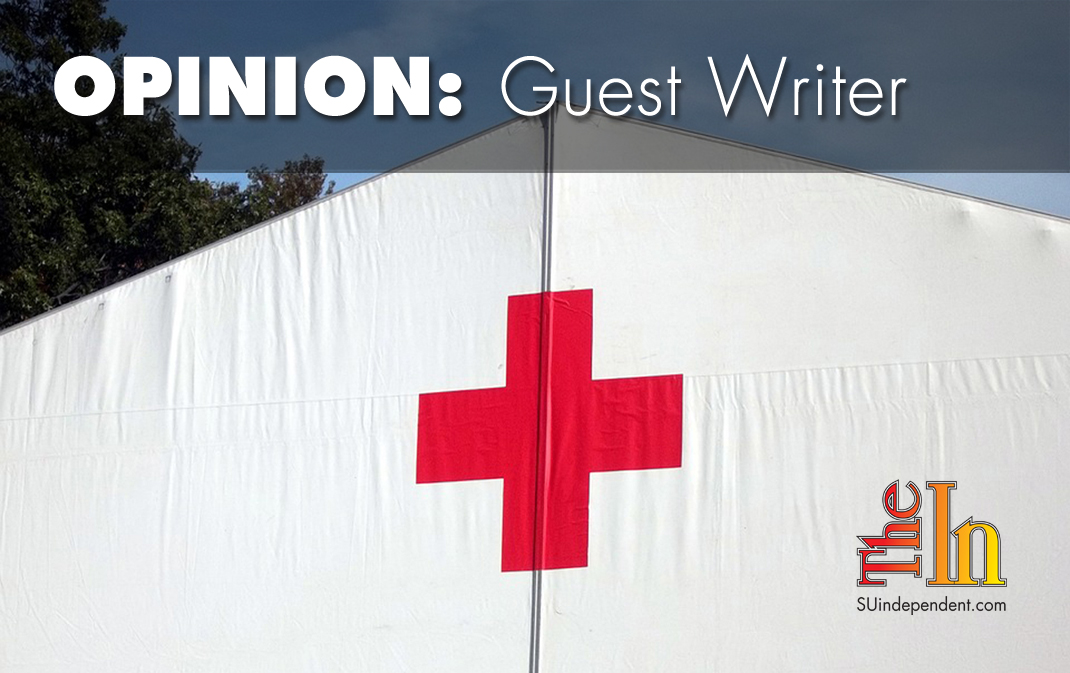 Short-term disaster relief is a disaster
Short-term disaster relief is a disaster
By Farzana Gandhi
When natural disasters strike, stories of the damage — along with heartbreaking photos and video — dominate news coverage. Celebrities tweet to raise awareness. Charities and governments pump in short-term emergency funds.
Then attention fades. Affected communities suffer for years after the short-term relief is exhausted. This rinse-and-repeat cycle is failing vulnerable communities.
There’s a better way. When disaster occurs, we need to channel funds to deliver long-term infrastructure support rather than just short-term relief. Those groups must tailor their aid to local communities.
Consider how the short-term approach is failing Puerto Rico.
Last year, Hurricanes Irma and Maria demolished Puerto Rico’s electrical grid and water infrastructure. Six weeks after the back-to-back hurricanes hit, a quarter of the island’s 3.5 million residents had no access to safe drinking water. For months after, nearly half of all Puerto Ricans lived without power.
FEMA, the federal agency responsible for disaster response, was unprepared for the hurricanes. After the disaster, it struck aid-delivery deals with inexperienced contractors. FEMA inked one contract for 30 million self-heating meals. By the deadline at which 18.5 million of the meals were due, Puerto Ricans had received only 50,000 — none of which were self-heating.
Or consider Haiti. Following Haiti’s 2010 earthquake, foreign aid poured into the capital city. But little financial support reached rural areas, where a massive cholera outbreak killed thousands.
The Red Cross alone raised a stunning $488 million but didn’t spend it effectively. It built only six permanent homes.
Over eight years after the quake displaced millions of people, 2.5 million Haitians still need humanitarian aid.
Rebuilding nations without proper resiliency strategies, only to spend billions more rebuilding when they are destroyed in the next disaster, is wasteful.
Natural disasters are somewhat predictable. Five Midwestern states comprise America’s “Tornado Alley.” About 15 named storms have emerged in the Atlantic every year since 2000. California suffers several wildfires every summer.
When a disaster does strike, humanitarians should focus on the long term. That’s where the expertise of architects and urban designers can make a difference. They can create rebuilding schemes that respond to the needs of local community members — something aid agencies have often struggled with.
Aid groups can look to Chile as a model. In 2010, an earthquake and tsunami crippled the La Poza community.
Corporate donors hired architect Alejandro Aravena to help rebuild. He surveyed local residents about what they needed. They noted several priorities: protection of homes from floods, large public spaces, and access to the local river.
Based on a community vote, Aravena designed a forest between residences and the river. The trees would deplete up to 70 percent of the power of any future tsunami. Escape paths through the forest would enable residents to leave quickly if necessary. Plus, the forest served as a public space.
The work of award-winning architect Shigeru Ban in Nepal offers another example. In 2015, an earthquake ravaged the country. Ban developed a multi-part plan for providing both immediate and long-term help to victims.
Collaborating with local universities, students, and architects, Ban’s firm built temporary living structures out of the rubble from the disaster and other local materials. The housing meets strict earthquake standards. Ban will also help locals build permanent homes and adapt designs to different circumstances.
Clearly, locally tailored, forward-looking disaster relief responses are the strategies aid organizations need to adopt.
Farzana Gandhi is an associate professor in the Department of Architecture at New York Institute of Technology. She is a registered architect in New York and a LEED accredited professional.
Articles related to “Short-term disaster relief is a disaster”
The viewpoints expressed above are those of the author and do not necessarily reflect those of The Independent.
How to submit an article, guest opinion piece, or letter to the editor to The Independent
Do you have something to say? Want your voice to be heard by thousands of readers? Send The Independent your letter to the editor or guest opinion piece. All submissions will be considered for publication by our editorial staff. If your letter or editorial is accepted, it will run on suindependent.com, and we’ll promote it through all of our social media channels. We may even decide to include it in our monthly print edition. Just follow our simple submission guidelines and make your voice heard:
—Submissions should be between 300 and 1,500 words.
—Submissions must be sent to editor@infowest.com as a .doc, .docx, .txt, or .rtf file.
—The subject line of the email containing your submission should read “Letter to the editor.”
—Attach your name to both the email and the document file (we don’t run anonymous letters).
—If you have a photo or image you’d like us to use and it’s in .jpg format, at least 1200 X 754 pixels large, and your intellectual property (you own the copyright), feel free to attach it as well, though we reserve the right to choose a different image.
—If you are on Twitter and would like a shout-out when your piece or letter is published, include that in your correspondence and we’ll give you a mention at the time of publication.



